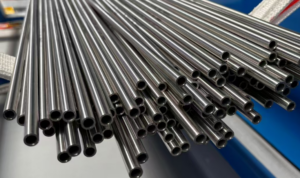Among the various materials available, tool steel and high-speed steel (HSS) stand out as two of the most commonly used. However, despite their similarities in applications, there are distinct differences between these two types of steel that are crucial for professionals to understand. In this article, we will divide into the difference between tool steel and high speed steel (HSS).

What is the Difference between Tool Steel and High Speed Steel (HSS)?
Definition and Composition
Tool steel is a type of carbon steel that is specifically designed for the fabrication of cutting and forming tools. It is characterized by its high hardness, wear resistance, and ability to retain its shape and sharpness under heavy loads. Tool steel typically contains varying amounts of carbon, chromium, molybdenum, tungsten, vanadium, and other alloying elements, which contribute to its unique properties.
High-speed steel (HSS), on the other hand, is a type of alloy steel that is formulated for high-speed cutting applications. It derives its name from its ability to maintain cutting speeds that are significantly higher than those of traditional carbon steels. HSS contains a high percentage of tungsten, molybdenum, chromium, vanadium, and cobalt, which provide it with exceptional hardness, hot hardness, and wear resistance.
Properties and Characteristics
The key properties that distinguish tool steel from HSS lie in their hardness, wear resistance, and heat resistance. Tool steel, depending on its specific alloy composition, can achieve extremely high hardness levels, making it suitable for applications that require extreme wear resistance. However, its heat resistance is typically lower than that of HSS, limiting its use in high-speed cutting operations.
HSS, on the other hand, exhibits excellent hot hardness, allowing it to maintain its cutting edge at high temperatures. This property is crucial for high-speed cutting operations, where the cutting tool is subjected to significant heat generated by friction. Additionally, HSS’s wear resistance is also superior to that of many tool steels, further enhancing its performance in demanding applications.
Applications
The differences in properties between tool steel and HSS naturally lend them to different applications. Tool steel is commonly used in the manufacture of punches, dies, drills, taps, reamers, broaches, and other cutting and forming tools that require extreme hardness and wear resistance. Its ability to retain shape and sharpness under heavy loads makes it an excellent choice for these applications.
HSS, on the other hand, is the preferred material for high-speed cutting tools such as lathe bits, milling cutters, and drill bits. Its exceptional hot hardness and wear resistance allow it to maintain its cutting edge at high speeds, significantly improving productivity and reducing tool wear.
Cost Considerations
When comparing the cost of tool steel and HSS, it is important to consider both the initial material cost and the long-term cost of tool replacement and maintenance. While HSS may have a higher initial material cost than some tool steels, its superior performance in high-speed cutting applications often leads to lower long-term costs due to reduced tool wear and replacement rates.
Conclusion
In summary, tool steel and high-speed steel (HSS) are both excellent materials for the manufacture of cutting and forming tools. However, their differences in properties and characteristics make them suitable for different applications. Tool steel’s extreme hardness and wear resistance make it ideal for applications that require heavy loads and extreme wear conditions. HSS’s exceptional hot hardness and wear resistance, on the other hand, make it the preferred choice for high-speed cutting operations.
Thank you for reading our article and we hope it can help you to have a better understanding of the difference between tool steel and high speed steel. If you are looking for tool steel and high speed steel suppliers and manufacturers online now, we would advise you to visit Sino Special Metal for more information.
As a leading supplier of tool steel and high speed steel from Shanghai China, Sino Special Metal offers customers high-quality tool steel and high speed steel products at a very competitive price.




